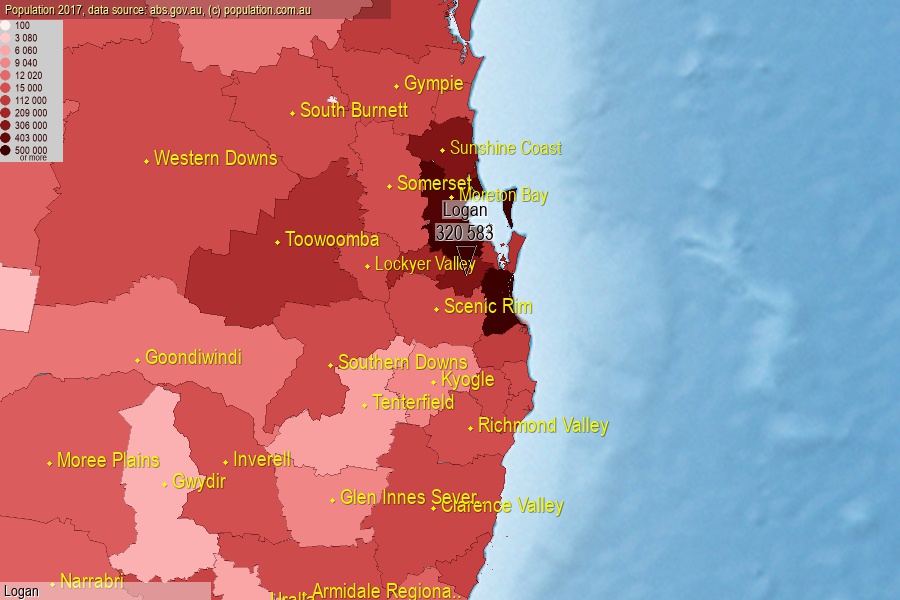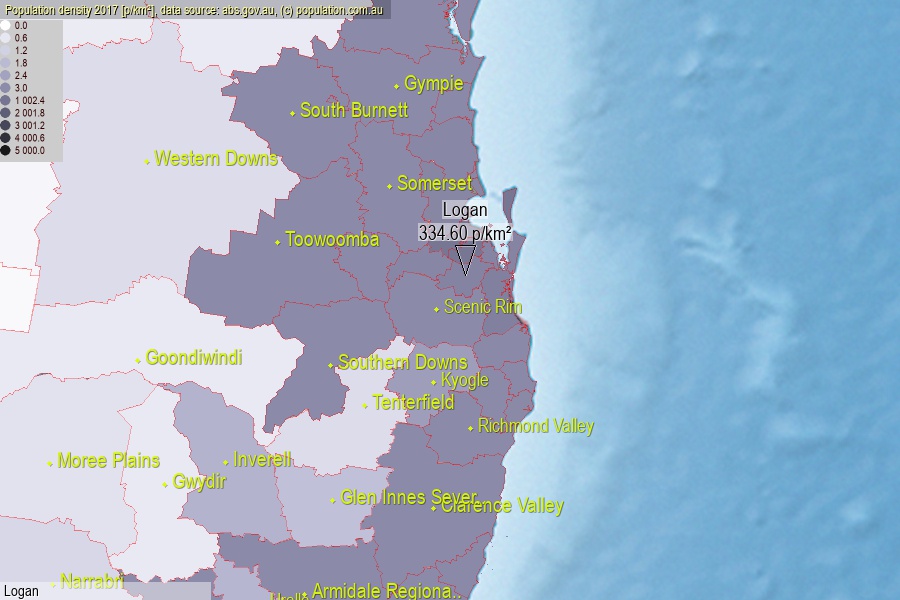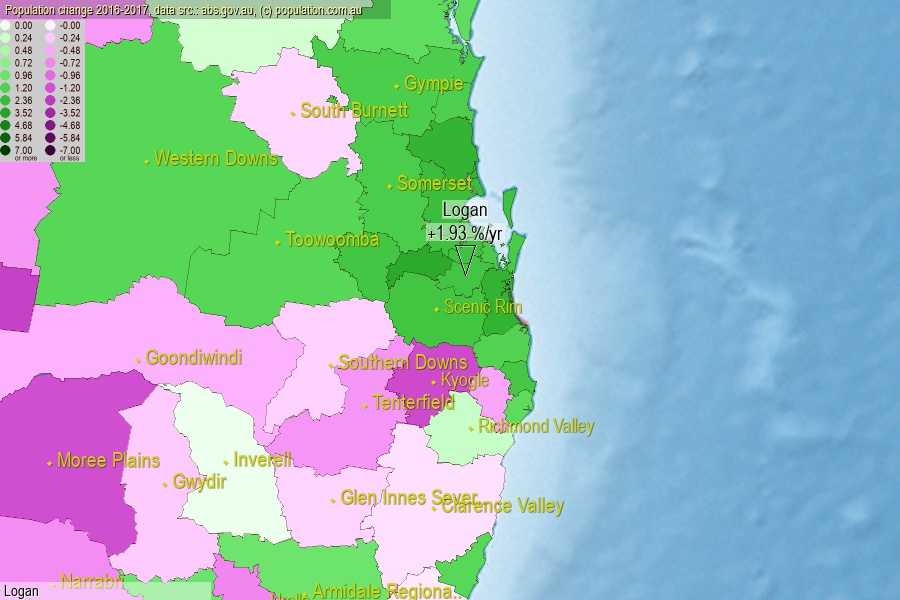 population.com.au
population.com.auLast official estimated population of Logan City (as Local Government Area) was 320 583 people (on 2017-06-30)[2]. This was 1.29% of total Australian population and 6.424% of QLD population. Area of Logan is 958.10 km², in this year population density was 334.60 p/km² . If population growth rate would be same as in period 2016-2017 (+1.93%/yr), Logan population in 2025 would be 373 575. [0]



Click to enlarge. Logan is located in the center of the images.
Population [people], population density [p./km²] and population change [%/year] [2]
[1996-2001] +7.55 %/Y
[2001-2002] +2.20 %/Y
[2002-2003] +1.90 %/Y
[2003-2004] +2.08 %/Y
[2004-2005] +1.90 %/Y
[2005-2006] +2.05 %/Y
[2006-2007] +2.04 %/Y
[2007-2008] +2.35 %/Y
[2008-2009] +2.49 %/Y
[2009-2010] +1.74 %/Y
[2010-2011] +1.87 %/Y
[2011-2012] +2.26 %/Y
[2012-2013] +2.24 %/Y
[2013-2014] +1.53 %/Y
[2014-2015] +1.37 %/Y
[2015-2016] +1.67 %/Y
[2016-2017] +1.93 %/Y
[0] Calculated with linear interpolation from officially estimated population
[1] Read more about LGA and Australian Statistical Geography Standard (ASGS) on abs.gov.au
[2] Population data from Australian Bureau of Statistics (Population and density: 2017; change: 2016-2017)
[3] Digital Boundaries: Australian Statistical Geography Standard (ASGS) 2016.